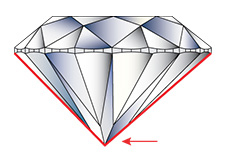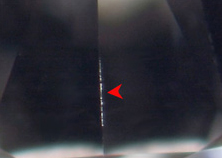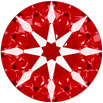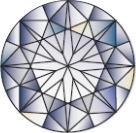Star Solitaire Inc. Grading Books
introduction
Star Solitaire Inc. established in 1980 as a family owned enterprise, Star Solitaire Inc. has become a globally trusted name in the Diamond Solitaire business based on strong values, honesty and transparency in business and focus on customer satisfaction.
Investments and constant upgrade in the best diamond manufacturing technology at our India factory, direct sourcing from the world’s leading mining Companies, and a highly skilled workforce have helped us produce high quality solitaires at the most competitive prices.
Our customer oriented sales and market team coupled with real time technology and a global distribution network has enabled us to become a consistent and volume supplier or solitaires in rounds and fancy shapes to dealers and jewelers worldwide.
DIAMOND IS ENGRAVED IN 4C’S CONCEPT
Important factors effecting diamonds
- Shape
- Symmetry
- Polish
- Heart & Arrows
- Fluorescence
- Luster
- Opens
- Inclusion Pattern
- Culet
- Black Inclusion
- Table & Crown Inclusion

White Color

yellowish

brown

Pink

Grey

Green
Diamond Color Guide
Premium White

White

Tinted White

Slightly Tinted

Faint Yellow

carat
The size of a diamond is proportional the carat weight of a diamond. When rough diamonds are cut and polished into finished diamonds, up to 2/3 of the total carat weight may be lost. Since larger rough gems of high quality are found less frequently than smaller rough gems of high quality, a single two carat diamond will be more expensive than two one-carat diamonds of the same quality. We specialize in 0.30 to 5.00 carats
Diamond Carat Guide
-
0.25
Ct.

4.1
mm
-
0.50
Ct.

5.1
mm
-
0.75
Ct.

5.8
mm
-
1.00
Ct.

6.4
mm
-
1.50
Ct.

7.4
mm
-
2.00
Ct.

8.1
mm
-
3.00
Ct.

9.3
mm
-
4.00
Ct.

10.2
mm
-
5.00
Ct.

11.25
mm
carat size
+0.180.180 to 0.229
+0.230.230 to 0.299
+0.300.300 to 0.399
+0.400.400 to 0.499
+0.500.500 to 0.699
+0.700.700 to 0.899
+0.900.900 to 0.999
+1.001.000 to 1.499
+1.501.500 to 1.999
+2.00 2.000 to 2.999
+3.00 3.000 to 3.999
+4.00 4.000 to 4.999
+5.00 5.000 to 5.999
+6.00 6.000 to 6.999
+7.00 7.000 to 7.999
+8.00 8.000 to 8.999
+9.00 9.000 to 9.999
+10.0010.000 to 10.999
Clarity
The clarity grading of a stone is based on the number of inclusions and range from internally flawless to I3 (many internal inclusions) and we grade the stones based on the following internationally accepted criteria.
|
fl
|
Flawless |
|
if
|
Internally Flawless |
|
vvs1
|
Very very slightly included 1 |
|
vvs2
|
Very very slightly included 2 |
|
vs1+
|
Slightly better than VS1 |
|
vs1
|
Very slightly included 1 |
|
vs2+
|
Slightly better than VS2 |
|
vs2
|
Very slightly included 2 |
|
si1+
|
Slightly better than SI1 |
|
si1
|
Slightly included 1 |
|
si2+
|
Slightly better than SI2 |
|
si2
|
Slightly included 2 |
|
SI3+
|
Slightly better than SI3 |
|
SI3
|
Slightly included 3 |
|
I1+
|
Slightly better than I1 |
|
I1
|
Included 1 |
|
I1-
|
Slightly lower than I1 |
|
12+
|
Slightly better than I2 |
|
I2
|
Included I2 |
|
I2-
|
Slightly lower than I2 |
|
I3+
|
Slightly better than I3 |
|
I3
|
Included I3 |
|
|
|
| if |
vvs1vvs2 |
vs1vs2 |
si1si2si3 |
i1i2i3 |
|
internally
flawless
|
very very slightly
included
|
very slightly
included
|
slightly
included
|
imperfect
|
 |
 |
 |
 |
 |
DIAMOND MEASUREMENT
Diamond cut
excellent

very good

good

fair

brilliant cut

round

marquise

oval

princess

pear

heart

trilliant

asscher

emerald

cushion

radiant
symmetry
Symmetry refers to the exactness of the shape and arrangement of facets and can be affected by the following factors:
off-round

Deviation from the circular shape of a round diamond.
off-center: culet

Deviation from the culet from the central position on the pavilion.
girdle thickness variation

Variation of the girdle thickness at the bezel positions.
off-center table

Deviation of the table from the central position of the crown.
table/ culet alignment

Displacement of the table facet and culet in opposite directions.
table size variation

Differing table size measurements indicating non-octagonal table.
Based on the factors above, we grade symmetry Under 10 X magnification as follows:
| EX |
Excellent Symmetry |
| VG |
Very Good Symmetry |
| GD |
Good Symmetry |
| FR |
Fair Symmetry |
polish
Polish is a measure of the smoothness of the facets on the stone and can be affected by any of the following:
abrasion

scratches

burn marks

nick

polishing lines

Other features which affect polish are:
Pit, Transparent Polishing Lines, Dop Burn, Rough Girdle, Laser Groove.
We grade the polish finish (Under 10 X magnification) with the following criteria:
| EX |
Excellent Polish |
| VG |
Very Good Polish |
| GD |
Good Polish |
| FR |
Fair Polish |
hearts & arrows
diagram 1

(Heart Image)
diagram 2

(Arrow Image)
The term Hearts and Arrows relates to a stone having perfect proportions and symmetry. When perfectly polished, the stone displays Heart shaped reflections when looking from the Pavilion (Diagram 1) and Arrow shaped reflections when looking from the Table (Diagram 2)
Based on the factors above, we grade Heart & Arrow as follow:
| ID |
Ideal Hearts & Arrows |
| EX |
Excellent Hearts & Arrows |
| VG |
Very Good Hearts & Arrows |
Factory
We manufacture ove 40,000 solitaires every year in our India factory. We have adopted the latest technologies and machines to manufacture the perfect diamond and are at the forefront of research into new innovations.
We enjoy over 700 skilled workers who work together as an efficient and effective team, and who are passionate about diamonds.
opens
An open is a very small unpolished section of a stone affects the polished finish.
Opens can be a Nick, Cavity or Percussion mark, knot, Etch Channel, Bruise & pit.
When grading stones we define an Open according to where it is located on the stone. It can be on the Table, Crown, Girdle or Pavilion.
the different facets of a round brilliant cut diamond

We grade opens as follows:
| N |
None |
| V.S |
V.Small |
| S |
Small |
| MED |
Medium |
| L |
Large |
Associates

Inclusion Pattern
The inclusion pattern defines the extent and proportion of inclusions in the stone.
The grading criteria range from minor inclusions (scattered) to major inclusions (high concentration)
| NA |
NOT Applicable |
| NC |
NOT Concentrated |
| S1 |
Scattered 1 |
| S2 |
Scattered 2 |
| C1 |
Concentrated 1 |
| C2 |
Concentrated 2 |
| C3 |
Concentrated 3 |
Black Inclusion
Natts are black colored crystals, graphite or hematite within a stone. The more Natts inclusions within the stone the greater the impact on the clarity and ultimately the luster. We grade the Natts according to the concentration, position and size, based on the criteria and diagrams below.
| |
Black in Table (BIT) |
Black in Crown (BIC) |
| NO Black |
NO |
NO |
| Minor Black |
NO1 |
NO1 |
| Small Black |
N1 |
N1 |
| Medium Black |
N2 |
N2 |
| Major Black |
N3 |
N3 |
culet
A polished diamond has 57 facets and the Culet (the tiny facet or point at the base of the pavilion) The culet may vary in size that in turn can impact the brilliance of the polished stone, and so we grade the Culet from Pointed (excellent) to chipped.

None

V.Small

Small

Medium
| N |
None |
| V.S |
Very Small |
| S |
Small |
| MED |
Medium |
Table & Crown Inclusion
A diamond is graded by looking through the top (the Table) of the stone, where it is possible to obtain the complete picture of the clarity of your diamond. So we grade our diamonds on the basis to identify the Table and Crown inclusion.
For example: A low number of inclusions is graded 01, and high number of inclusions is graded 4.

TO1-CO1

T2-C1
| |
Table Inclusion |
| TO |
Clean Table |
| TO1 |
Minor Inclusions |
| T1 |
V. Slight Inclusions |
| T2 |
Slight Inclusions |
| T3 |
Medium Inclusions |
| T4 |
Heavy Inclusions |
| |
Crown Inclusion |
| CO |
Clean Table |
| CO1 |
Minor Inclusions |
| C1 |
V. Slight Inclusions |
| C2 |
Slight Inclusions |
| C3 |
Medium Inclusions |
| C4 |
Heavy Inclusions |
For example: A low number of inclusions is graded 0, and high number of inclusions is graded 5.
luster
Luster is a way of measuring how the light interacts with the surface of the stone.
We use our experienced in house gemologists to assess the degree of luster.
When a stone has a cloudy effect, we grade this with the term Milky luster.

EX

VG

ML - 01

ML - 1

ML - 2

ML - 3
We grade under as follows:
| EX |
Excellent Luster |
| VG |
Very Good Luster |
| ML - 01 |
(ML-01) Minor Milky Luster |
| ML - 1 |
(ML-1) Slight Milky Luster |
| ML - 2 |
(ML-2) Medium Milky Luster |
| ML - 3 |
(ML-3) Heavy Milky Luster |
fluorescence
To measure fluorescence diamonds are exposed to ultraviolet light. This light will indicate the extent of fluorescence in as stone. The pictures below show the different grades of fluorescence.
top view

side view

NoneFaintMediumStrongVery Strong
Star Solitaire Inc. Grades Fluorescence with UV light and Compare with fluorescence master Stones for accurate results.
| N |
None |
| F / VSL |
Faint / V.Slight |
| M / SL |
Medium / Slight |
| STG |
Strong |
| V.STG |
Very Strong |